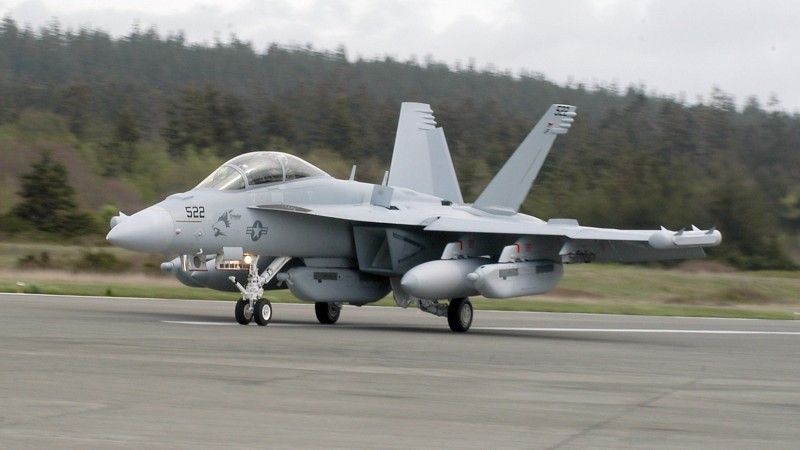Finland Expresses its Interest in the EA-18G Growler Platform

Finland is interested in the F/A-18E/F Super Hornets and their EA-18G Growler variant as well (electronic warfare/SEAD version). That interest has been expressed within the scope of the current H-X programme with an intention of acquiring 64 multi-role combat aircraft. This was confirmed by Gene Cunningham, Vice President Boeing Military Aircraft for Global Sales at Boeing Defense, Space and Security.
Cunningham told us that as Boeing offers a full range of operational capabilities that are associated with its F/A-18 jets, and this includes the E, F and G variants, and as these capabilities constitute a subject to scrutiny, significant interest can also be noticed in case of Finns. The decision to share a full list of those options depends on the US government, and talks as such are currently in progress. The results, as Cunningham suggested, would depend on the course of the US-Finnish dialogue and, obviously, on competition against the other bidders.
Cunningham suggested that the Finnish air force remains especially interested in acquisition of a certain number of EA-18G Growler jets, within the scope of the offer made by Boeing. Benefits stemming from such selection are being taken into account as a part of analysis of the available options. Considering the specific nature of this type of military hardware, the US Administration would need to make a final decision here, as Growlers are a subject to the FMS programme.
The Boeing's official also claimed that the fact that the Finns have been using the F/A-18C/D Hornet jets since 1995 shall not be overlooked, as transition from C/D to E, F or even to the G version would be cheaper and simpler for the pilots and for the ground crews, due to the design similarities. The synergy, as Cunningham said, entailed by a transition from F/A-18C/D to the E, F and G variants is somewhat an obvious benefit – this has already been done by the US Navy and translates into fundamental savings, as Cunningham stated. At the same time the representative of the American company stressed the fact that the Finnish air force is going to approach the selection process methodically, also employing a set of transparent criteria. It shall be added that the Boeing’s employee is experienced within that regard, as he was involved in the procurement of the Finnish F/A-18C/D aircraft and in preparation of the facility that assembled 57 out of 62 jets between 1995 and 2000.
As Finland’s requirements within the scope of its national security are very specific, the state has, on the basis of those requirements, created an efficient assessment process. That assessment process looks at the individual aircraft and puts them into situational scenarios of a variety of types. Cunningham suggested that next year requirements, related to presentation of the offered jets on site, is going to be released, and only after that the offers would be properly assessed and verified. The scenario is somewhat identical, Cunningham says, to the first procurement when the Hornet was selected to become the Finland’s prime fighter.
It is also worth to list the jets competing in the Finnish HX Fighter programme, the value of which is estimated at the level of USD 7 to 10 billion. Back in May the Finns have sent their requests for proposals to the British, French, Swedish and US governments with regards to 5 types of aircraft: Boeing F/A-18 Super Hornet, Dassault Rafale, Eurofighter Typhoon, Lockheed Martin F-35 and Saab JAS-39 Gripen.
Meanwhile, not only would assessment of the offers and the aircraft themselves apply to the lifecycle cost, but also to the ability to act against airborne, naval and land targets, long range strike and ISR capabilities. Another important factor is the ability to operate autonomously from individual camouflaged landing strips with improvised infrastructure, which is a direct extension of the tactics employed by the Finnish military.
